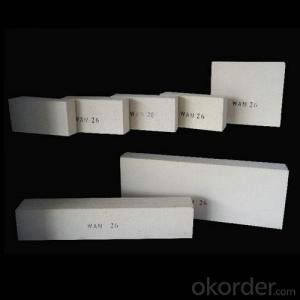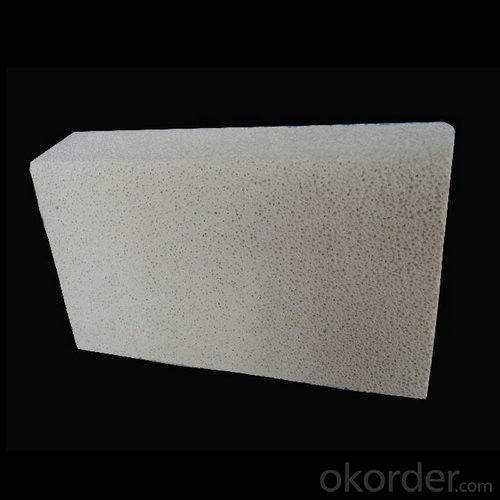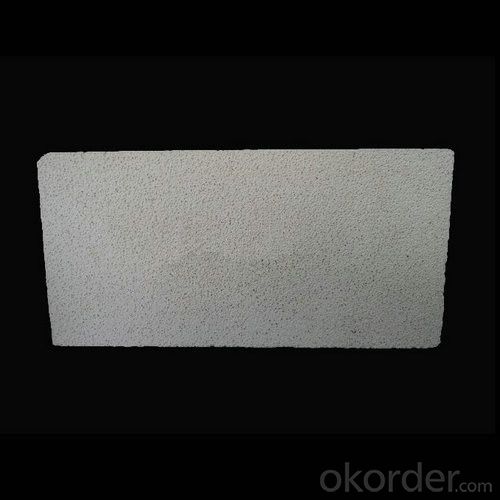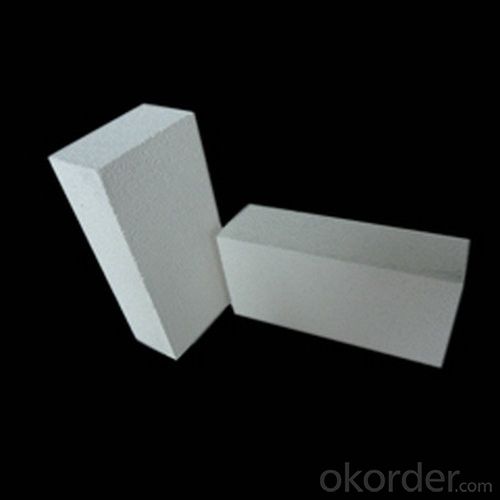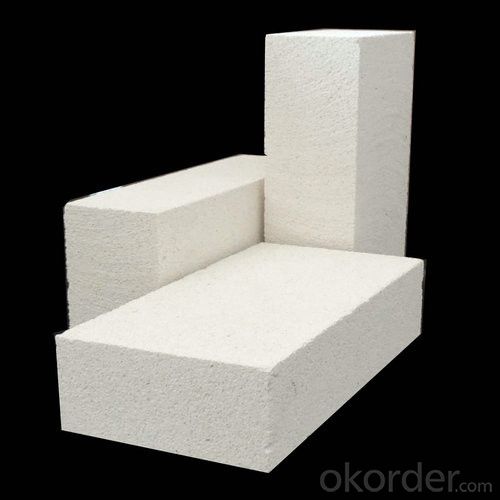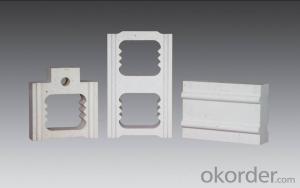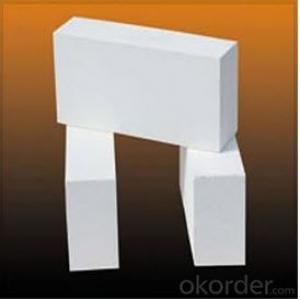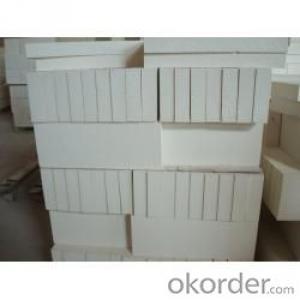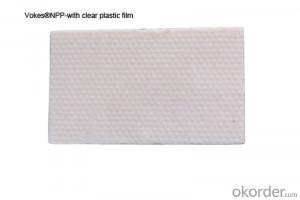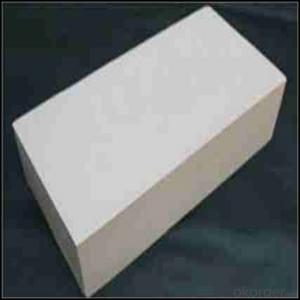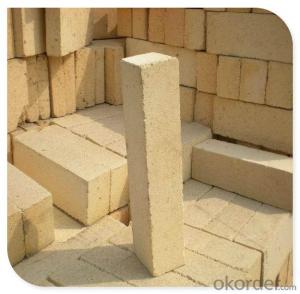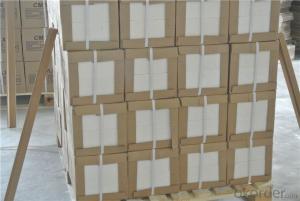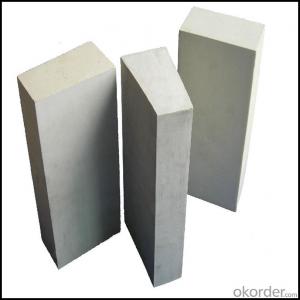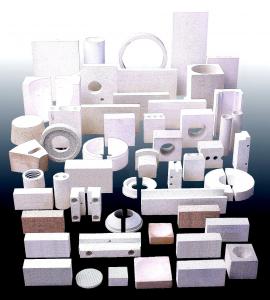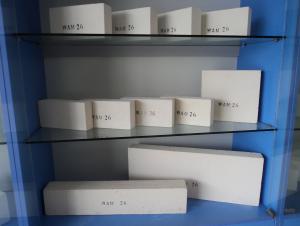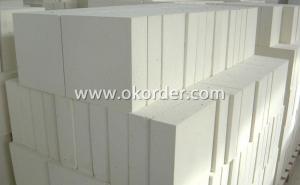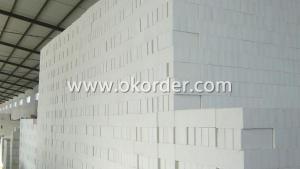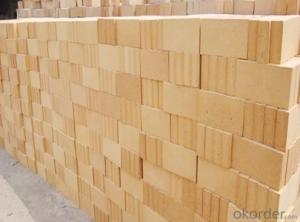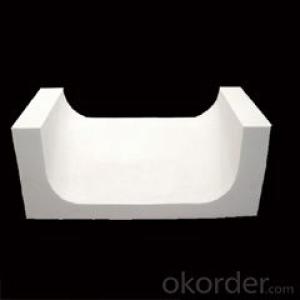Insulating Fire Brick - Chamotte Refractory Insulated Fire Bricks for Fireplace
- Loading Port:
- Shanghai
- Payment Terms:
- TT or LC
- Min Order Qty:
- 1 m.t.
- Supply Capability:
- 1000 m.t./month
OKorder Service Pledge
OKorder Financial Service
You Might Also Like
General Information of Insulated Fire Brick
CMAX Insulated Fire Brick are classified under temperature between 1300℃ to 1700℃, manufactured from high purity alumina clay.
Feature of Insulated Fire Brick
Light weight and low thermal conductivity
Low heat storage
Low iron and impurities
High thermal shock resistance
Application of Insulated Fire Brick
CMAX Insulated Fire Brick can be used as a hot face lining directly exposed to the heat or as a backup insulation layer in iron and steel mills, non-ferrous foundries, petrochemical, ceramic, glass.
Image of Insulated Fire Brick
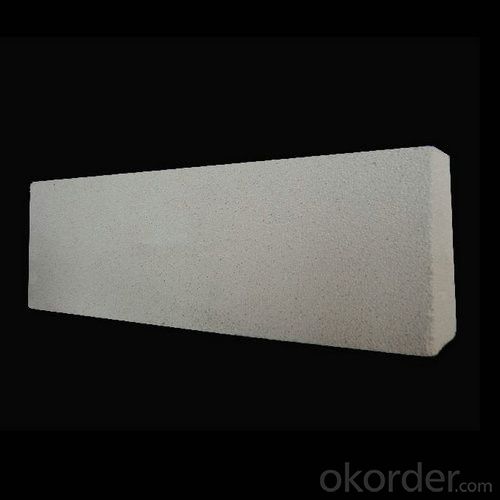
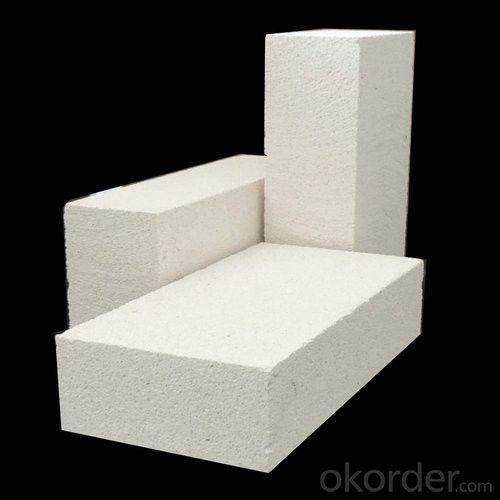
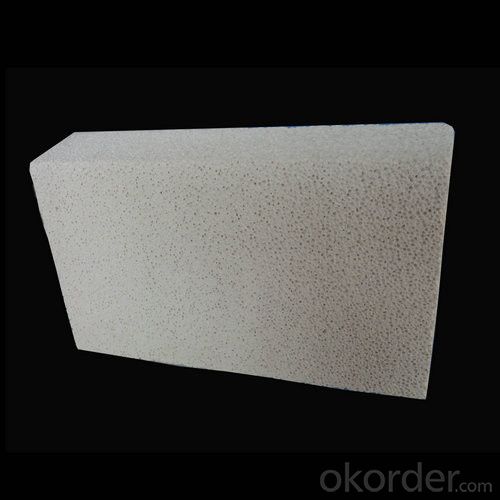
Technical Data of Insulated Firebricks
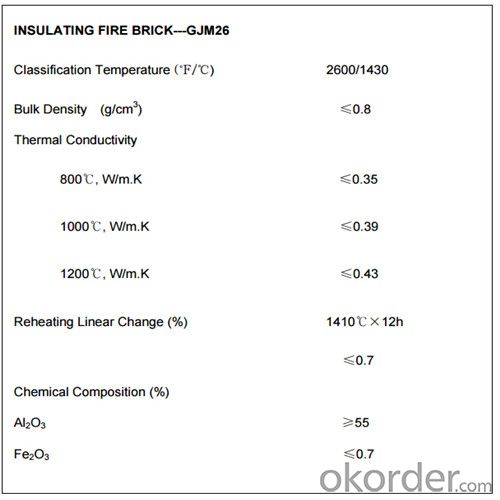
Why Choose Us
l We are a government owned company with ISO certificate.
l We are listed in Global Fortune 500 with D & B report.
l We have more than 11 refractory production facilities and bases across China. We have a wide products range, such as ceramic fiber products (ceramic fiber blanket, module, board, paper, bulk), ceramic fiber textile (ceramic fiber rope, cloth, tape, yarn) etc, refractory brick (fireclay brick, high alumina brick, silica brick, magnesia brick etc), monolithic refractory materials, insulating fire brick, calcium silicate board, mica sheet, steel fiber. You can find various products here, and we can combine the light weight ceramic fiber products with the heavy weight refractory brick in one container delivery, then save the sea freight for you.
l We have strict materials selecting system and quality control system. We have the ability to take responsibility for your orders and product quality.
FAQ
Q1: How do you control the products quality?
A1: With strict quality control system throughout the materials selection and production process, our refractory and ceramic fiber products quality is effectively controlled to meet customer requirements.
From the raw materials selecting, our quality control begin. The quality certificates of raw materials are required and each batch will be tested before using. During production, the quality control are conducted by workers and then each piece will be sorted and examined by quality supervis
Q2: What`s the lead time for my order?
A2: It depends on customers’ requirements and our production schedule. And usually we need 30-60 days for refractory bricks,10-25 days for unshaped refractory materials and 10-20 days for ceramic fiber blankets.
Q3: Can you offer Door-to-Door delivery?
A3: Yes, but only for some countries such us U.S., UAE, Saudi Arabia, Iran, and Russia, etc.
Q4: What is the minimum quantity?
A4: There is no minimum order quantity. Depending on the item and processing, there may be a minimum production required, however we can offer a quotation based only on the quantity you need.
Q5: Can you give me a brief introduction of the application of your products?
A5: CNBM (China National Building Material) core refractory business comprises the production, sale and installation of high-grade refractory products, the development and implementation of customized system solutions as well as rendering outstanding services for the key industries in Glass, Iron& Steel, Petrochemical, Cement, Ceramic and Nonferrous Metals.
- Q: Do insulating fire bricks require any special curing or firing temperature profiles?
- Yes, insulating fire bricks do require special curing and firing temperature profiles. Insulating fire bricks are made from lightweight materials such as perlite, vermiculite, or alumina silicate, which have high insulating properties. These bricks are designed to withstand high temperatures and provide excellent thermal insulation. During the manufacturing process, insulating fire bricks go through a curing process to remove any moisture content. This is typically done by gradually increasing the temperature in a controlled manner. The curing process is important to prevent any cracking or damage that could occur if the bricks were exposed to high temperatures too quickly. In terms of firing temperature profiles, insulating fire bricks require careful consideration. They are designed to be used in applications where temperatures reach up to 2800°F (1538°C). Therefore, it is crucial to follow the recommended firing temperature profiles provided by the manufacturer. The firing temperature profile typically involves a gradual increase in temperature to allow the insulating fire bricks to reach the desired maximum temperature without causing any thermal shock or damage. This slow heating process ensures that the bricks are properly cured and can withstand the extreme temperatures they will be exposed to during use. It is important to note that the specific curing and firing temperature profiles may vary depending on the type and composition of the insulating fire bricks. Therefore, it is essential to refer to the manufacturer's guidelines and recommendations to ensure the proper curing and firing process for the specific type of insulating fire bricks being used.
- Q: Can insulating fire bricks be used as a lining for kiln cars?
- Indeed, insulating fire bricks exhibit remarkable thermal insulation qualities, rendering them appropriate for utilization as linings in kiln cars. These bricks are specifically engineered to withstand elevated temperatures without experiencing any fractures or disintegration, thereby establishing them as an optimal option for securing kiln cars. Furthermore, their lightweight composition facilitates convenient handling and installation, thereby diminishing the overall weight and energy consumption of the kiln. Consequently, insulating fire bricks effectively supply insulation and safeguard kiln cars, significantly enhancing their efficiency and longevity.
- Q: Can insulating fire bricks be cut or shaped to fit specific dimensions?
- Yes, insulating fire bricks can be cut or shaped to fit specific dimensions. These bricks are made from lightweight refractory materials and are designed to be easily cut or shaped to meet specific requirements. They can be cut using a saw, knife, or other cutting tools, and can also be shaped by grinding or sanding. This flexibility allows for precise customization of the bricks to fit specific dimensions, making them a versatile option for various applications such as lining furnaces, kilns, and other high-temperature environments.
- Q: Do insulating fire bricks require any special storage conditions?
- Yes, insulating fire bricks require special storage conditions. They should be stored in a dry and well-ventilated area to prevent moisture absorption, which could lead to cracking or damage when exposed to high temperatures. Additionally, they should be protected from direct sunlight and extreme temperature variations to maintain their structural integrity.
- Q: Are insulating fire bricks suitable for use in aluminum smelting furnaces?
- Yes, insulating fire bricks are suitable for use in aluminum smelting furnaces. They have excellent thermal insulation properties, high temperature resistance, and can withstand the harsh conditions of aluminum smelting. Additionally, their low thermal conductivity helps to reduce energy consumption and increase furnace efficiency.
- Q: Are insulating fire bricks resistant to alkali attack?
- Yes, insulating fire bricks are generally resistant to alkali attack. These bricks are made from high-temperature refractory materials and are designed to withstand extreme temperatures and chemical environments. Alkalis are known to corrode and degrade certain materials, but insulating fire bricks are specifically formulated to resist this type of chemical attack. They have a low porosity and dense structure, which helps prevent the penetration of alkalis into the brick's surface. Additionally, the refractory materials used in these bricks have a high melting point and are chemically inert, making them well-suited for applications where alkali exposure is a concern. However, it is important to note that the specific resistance of insulating fire bricks to alkali attack may vary depending on the composition and manufacturing process of the brick, as well as the concentration and duration of alkali exposure. Therefore, it is always recommended to consult with the manufacturer or supplier for detailed information about the resistance of their specific insulating fire bricks to alkali attack.
- Q: Are insulating fire bricks suitable for use in the construction of lime kilns?
- Insulating fire bricks are indeed suitable for constructing lime kilns. These bricks are designed specifically to possess low thermal conductivity, enabling them to retain heat and avoid heat loss. This feature is crucial in lime kilns as they necessitate high temperatures for effectively converting limestone into lime. The utilization of insulating fire bricks facilitates the better maintenance of the kiln's generated heat, leading to enhanced energy efficiency and reduced fuel consumption. Moreover, these bricks are lightweight and convenient to handle, making them the perfect choice for lime kiln construction. All in all, insulating fire bricks are a dependable and efficient option for building lime kilns.
- Q: Is it possible to recycle used insulating fire bricks?
- Yes, it is possible to recycle used insulating fire bricks. These bricks can be crushed, ground, or shredded, and then the resulting material can be used as a raw material in the production of new bricks or as an aggregate in construction materials. Recycling used insulating fire bricks helps to reduce waste and conserve resources.
- Q: Do insulating fire bricks require a specific curing or drying process before use?
- Yes, insulating fire bricks typically require a specific curing or drying process before use. This involves gradually heating the bricks to remove any moisture or volatile materials present, which helps to prevent cracking or damage during subsequent use. The exact curing or drying process may vary depending on the specific type and manufacturer of the insulating fire bricks.
- Q: Are insulating fire bricks resistant to slag attack?
- Yes, insulating fire bricks are resistant to slag attack. These bricks are made of high-quality refractory materials that can withstand extreme temperatures and harsh conditions, including exposure to slag. They have low thermal conductivity and excellent insulation properties, making them ideal for applications where slag attack is a concern.
Send your message to us
Insulating Fire Brick - Chamotte Refractory Insulated Fire Bricks for Fireplace
- Loading Port:
- Shanghai
- Payment Terms:
- TT or LC
- Min Order Qty:
- 1 m.t.
- Supply Capability:
- 1000 m.t./month
OKorder Service Pledge
OKorder Financial Service
Similar products
Hot products
Hot Searches
Related keywords
